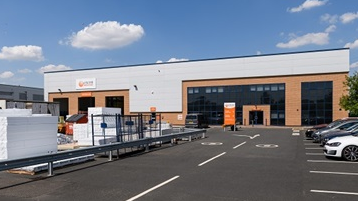Diversifying life sciences investment beyond Oxford-Cambridge could reshape the UK industry, but location challenges remain, writes Jonathan Phillips
Labour’s plans to direct investment for life sciences outside of the Oxford-Cambridge Arc could bring about a new wave of UK growth and innovation, signalling the possibility of a new landscape for the industry.

While this is promising news for developers looking to expand into new locations, it brings with it questions of the impact of location on growth, talent recruitment and scalability.
Whether in established hubs or emerging centres, location plays a deciding role in the long-term success of life sciences projects. With location determining proximity to suppliers, the availability of raw materials and access to essential infrastructure, it is necessary to have an in depth understanding of the key considerations influencing costs and return of investment.
So, how should developers choose the optimal location for life sciences investments?
Costs are determined not just by where you are building, but also what you are building. The specific nature of life sciences facilities can vary greatly, affecting costs in turn. For instance, certain life sciences projects, such as pharmaceuticals manufacturing centres, are eligible for tax benefits in certain countries.
Access to pools of specific materials and skilled labour is also greater in different regions. Within the life sciences itself, developments range widely – from offices to manufacturing, not to mention the large range of research and development facility types required in the sector.
All of these will have differing needs in terms of construction skills, materials, supply chain access, and planning requirements. If you work off generic industry construction costs for a given area, life sciences projects may look like a relatively expensive undertaking.
However, drilling down deeper into the sector and build type can give the insights needed to effectively prioritise investment. Now in its fourth year, Linesight’s Life Sciences Benchmarking Programme helps to investigate the changing costs of life sciences developments across different locations.
This programme compiles data from over 200 projects in the sector globally to provide a precise gauge of costs across countries, accounting for local variations.
Our analysis has enabled us to develop a set of location-specific cost factors derived from our dataset of real-world life sciences projects across the UK, Europe, Asia and the US. This data driven approach bridges the gap between estimates and final costs, providing relevant and actionable insights needed to offer the best possible return on investment.
The platform also goes beyond generic estimates by isolating specific costs for different elements such as electrical, HVAC and finishes, which can vary significantly. These findings are invaluable for stakeholders involved in fit-out or refurbishment projects, where the scope may only include selective upgrades or repairs.
By understanding how specific elemental location factors influence overall costs, project managers can more accurately forecast budgets, tailor procurement strategies, and optimise resource allocation. This ensures projects are run efficiently and to budget, while maintaining the desired quality and aesthetics in different geographical areas.
This platform recommends using different factors for different types of projects rather than using a blanket factor for a project. For clients planning new facilities in the UK, while identifying geographically-determined cost differences might be the first step, the second is understanding the factors influencing this variance.
The cost of land might be greater in high-demand areas like the UK’s ‘Golden Triangle’ of Cambridge, London and Oxford.
These areas tend to also have a competitive labour market, which can influence construction costs. However, building near an established cluster allows new projects to benefit from shared infrastructure when it comes to supply chain access.
Depending on location project timelines can be influenced by planning requirements due to zoning regulations, environmental impact assessments and permitting processes. Developers need a thorough understanding of the requirements of different local authorities to ensure compliance and streamline approvals.
Understanding the resilience of supply chains and the geopolitical dynamics impacting continuity of supply is also key, as political events and environmental disruptions vary across the globe.
Choosing a location close to the suppliers of raw materials and equipment could help reduce transport costs and possibly some of these long-distance logistical delays.
Geography has never been more important for developers looking at where to build next. It will boil down to the main motivator for the project. Is the main driver the schedule?
Is there an urgency to get the facility operational? If so, the ability to cut through red tape faster will be a key factor in the decision-making process.
If cost efficiency is more important, this may allow for more time to consider cheaper land options, which might come with more bureaucracy and longer project timelines.
The location of life sciences facilities is not just a logistical detail; it directly impacts every aspect of a project, from speed of delivery to upfront cost and long-term returns.
To read the latest IPE Real Assets magazine click here.


















